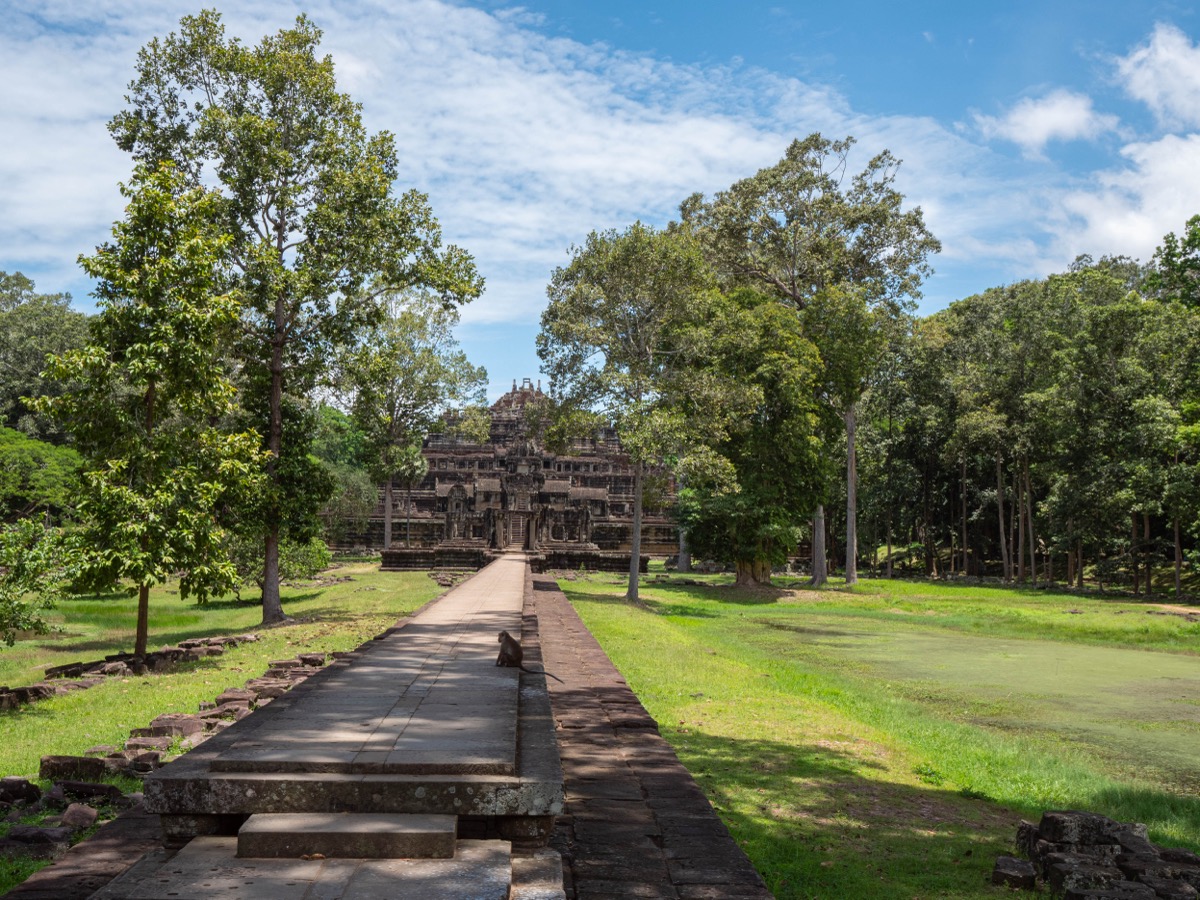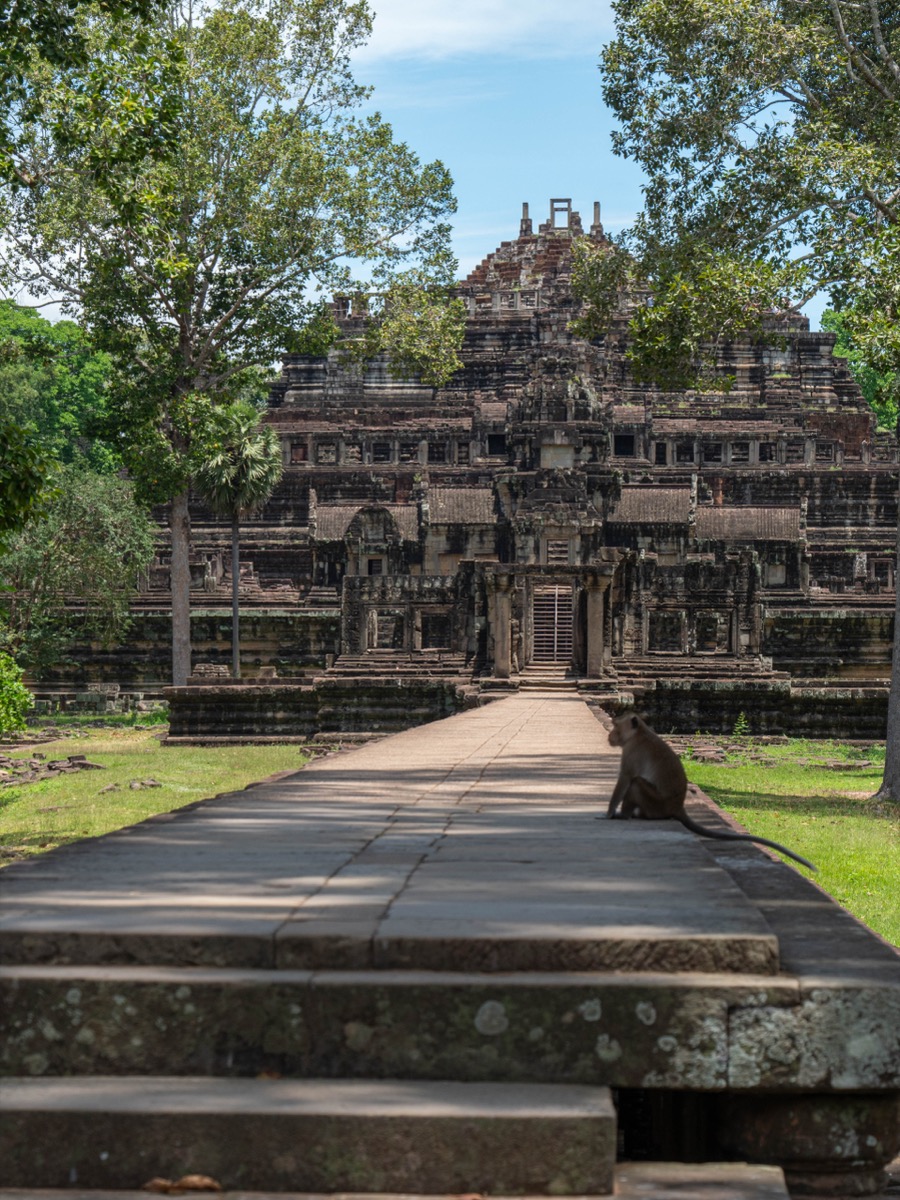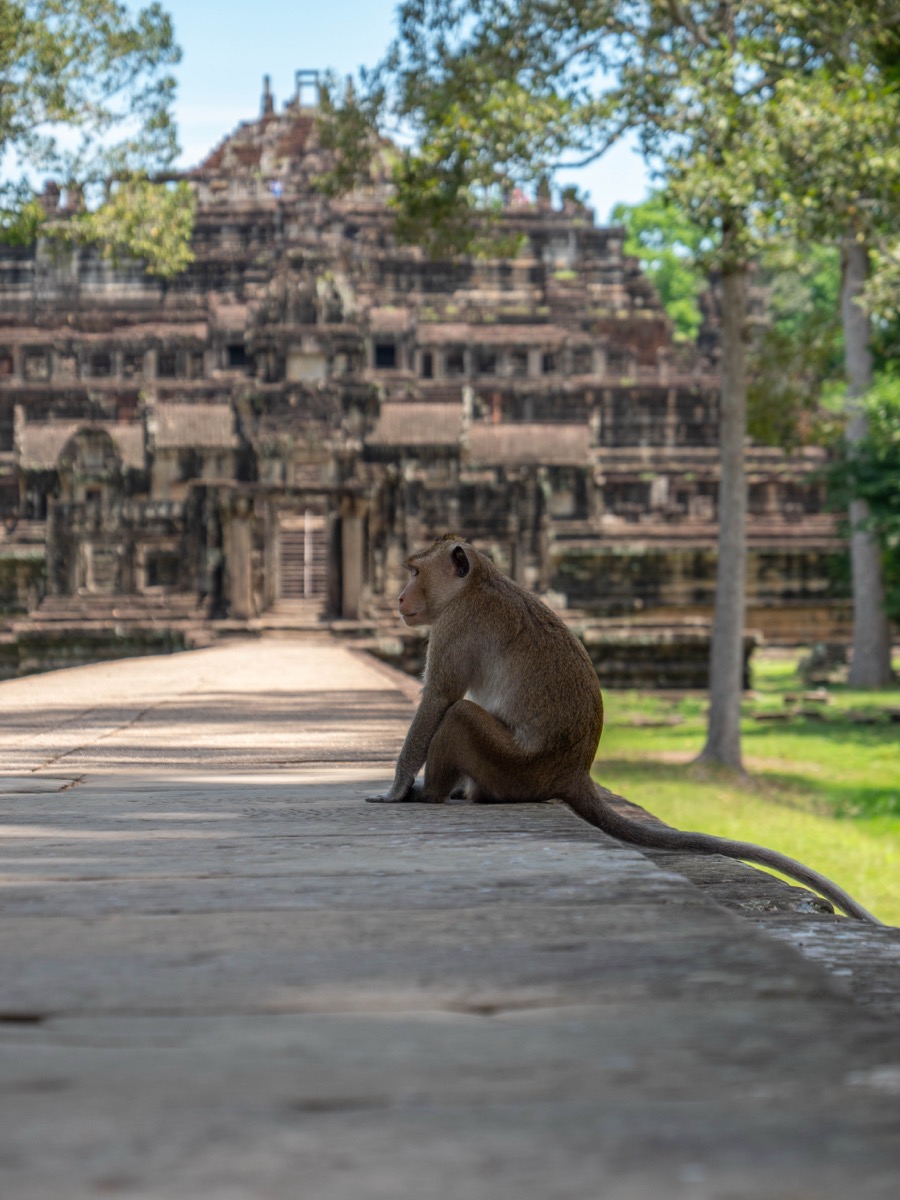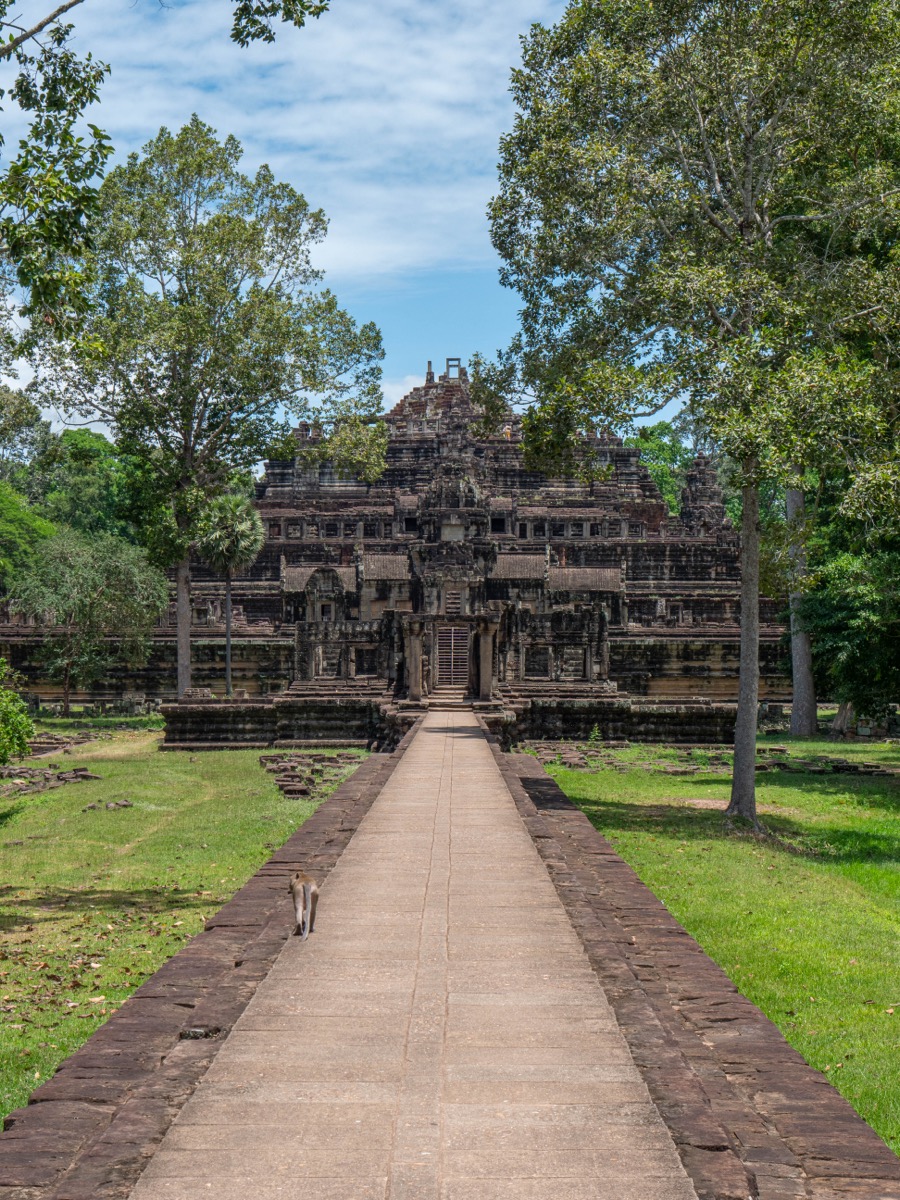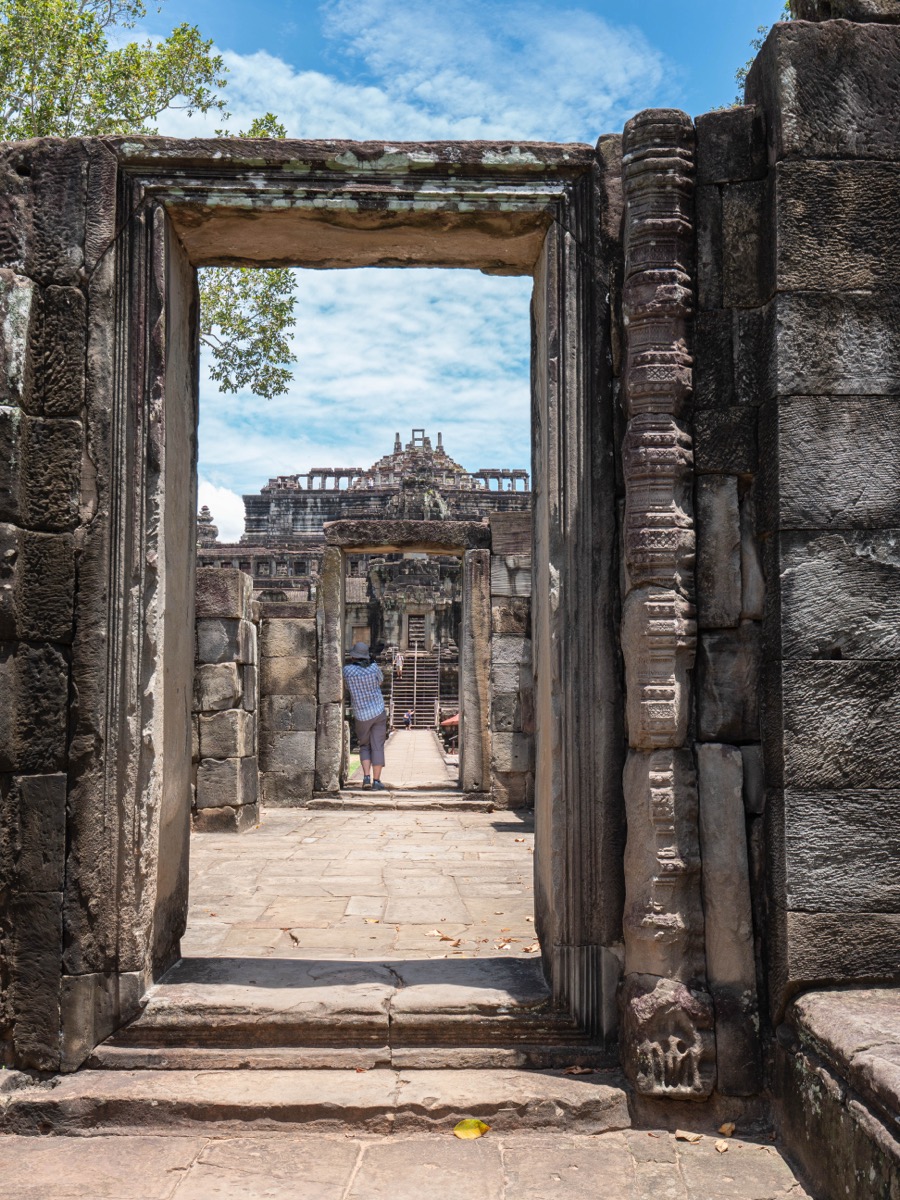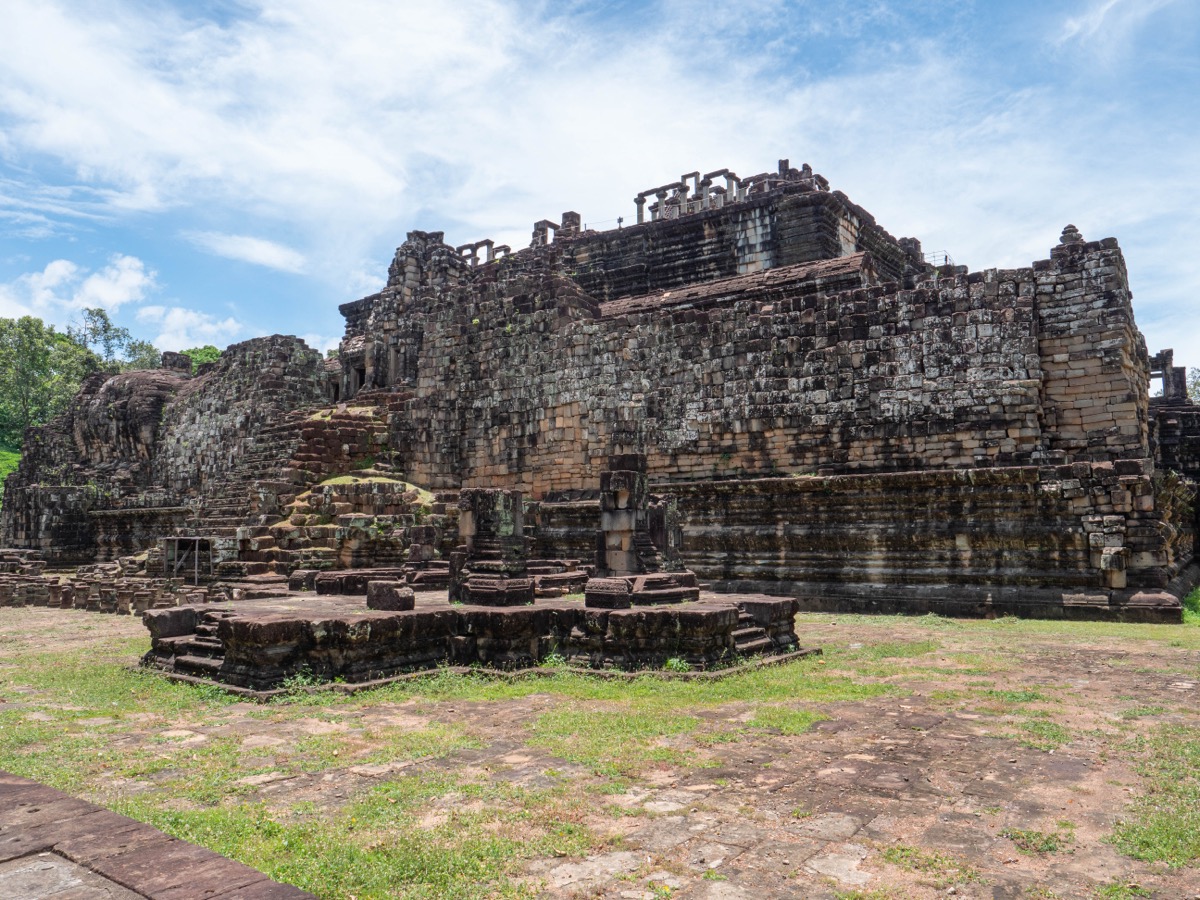The Baphuon - បាពួន
The Baphuon temple is one of the architectural jewels of the ancient city of Angkor, Cambodia. Located within the Angkor Thom complex, it is considered one of the largest Khmer temples of the 11th century. The Baphuon was built during the reign of King Udayadityavarman II, toward the end of the 11th century, as a state temple dedicated to the Hindu god Shiva.
Its architecture is remarkable, with a three-tiered sandstone pyramid rising to about 50 meters in height. It features detailed carvings and decorations depicting mythological and religious scenes.
Over the centuries, the Baphuon underwent modifications, including the construction of a massive reclining Buddha statue visible at the rear of the temple.
Its restoration began in the late 1960s using the anastylosis technique. This method involves numbering and documenting every piece of the temple to allow for its precise reconstruction after reinforcing the foundations with modern structures. After the temple was dismantled, the project was abandoned in 1971 when the Khmer Rouge took power and destroyed all original plans and documentation.
Following the Khmer Rouge regime, a long period of research was needed to determine the original location of each stone block.
During this process, thousands of stones were numbered in order to return them to their original place. This made the Baphuon’s restoration particularly complex and difficult. However, after years of effort, the temple was reconstructed and reopened to the public in 2011.
A Temple-Mountain in the Heart of Angkor Thom
Located just north of the Bayon, within Angkor Thom, the Baphuon is a temple-mountain built in the 11th century under King Udayadityavarman II (around 1060). Dedicated to Shiva, it symbolized Mount Meru, the mythological home of the Hindu gods.
At its height, the Baphuon was one of Angkor’s largest monuments.
Ambitious Architecture
The Baphuon was built of sandstone atop a laterite base, with a three-tiered pyramidal structure:
- Original estimated height: nearly 50 meters.
- Steep, narrow stairways leading to shrines on the terraces.
- Galleries, lintels, and pediments decorated with Hindu scenes (partially lost).
- A raised 200-meter-long walkway leading to the central sanctuary.
The structure was built on unstable foundations, leading to early structural problems.
A Converted Temple
In the 15th century, as the kingdom gradually adopted Theravāda Buddhism, the central shrine was demolished to make way for a massive reclining Buddha nearly 70 meters long, added to the rear western wall of the top tier.
This fusion of traditions reflects the evolving religious landscape of Cambodia.
A Monumental Restoration Effort
By the 20th century, the Baphuon lay in ruins: collapsed, overgrown, and dismantled block by block in the 1960s for planned restoration using anastylosis.
But civil war and the rise of the Khmer Rouge halted the project. The original plans were lost, leaving the site in a chaotic state.
Restoration resumed in the 1990s under the direction of the French School of the Far East (EFEO). The team had to:
- Identify over 300,000 numbered stone blocks.
- Rebuild the structure as a gigantic archaeological puzzle.
- Complete the site’s reopening to the public in 2011.
This project is regarded as one of the most complex restorations in the history of monumental conservation.
Visiting the Baphuon
Today, visitors can:
- Climb to the top of the temple for panoramic views of Angkor Thom.
- Observe the remains of the reclining Buddha at the rear of the sanctuary.
- Discover the dual nature of the site: originally Hindu, later Buddhist.
The climb is steep but well maintained. Morning or late afternoon light highlights the relief of the restored sandstone.
Conclusion
The Baphuon is a paradoxical monument: both fragile in structure and immense in ambition. It embodies the challenges of Khmer architecture, the spiritual richness of the Angkor Empire, and the modern perseverance required to recover a lost legacy. Less crowded than the Bayon, it offers a quieter, more introspective visit in the heart of Angkor Thom.
